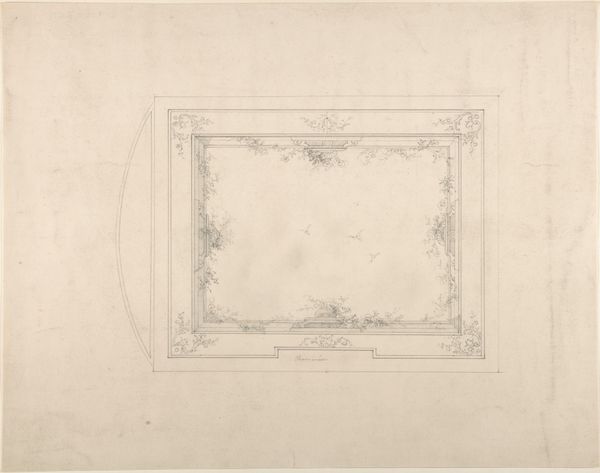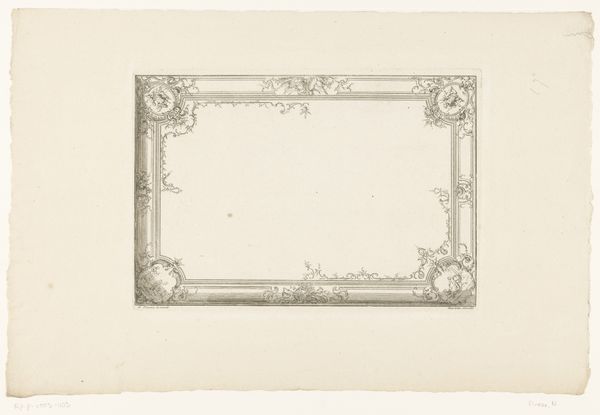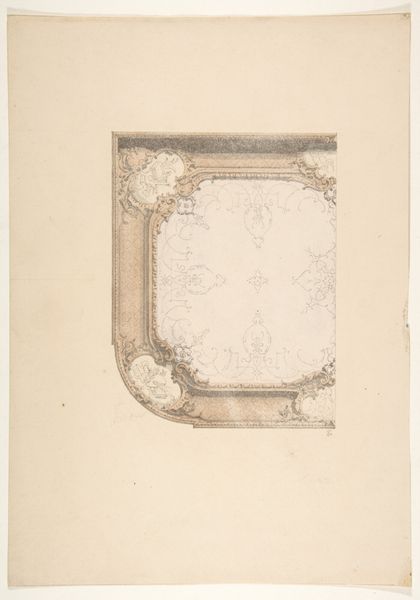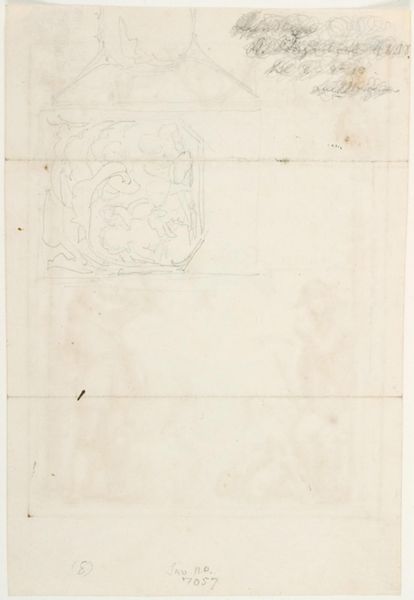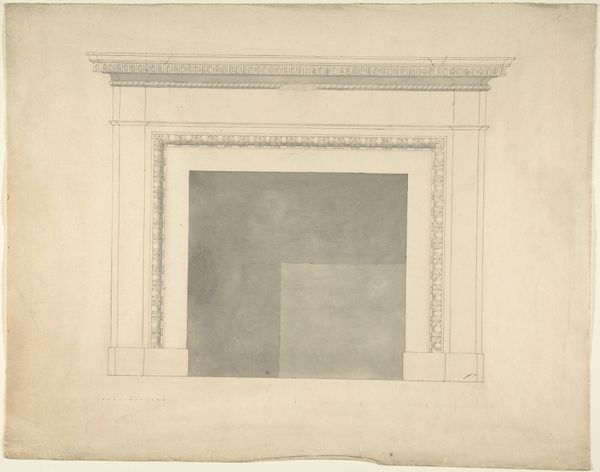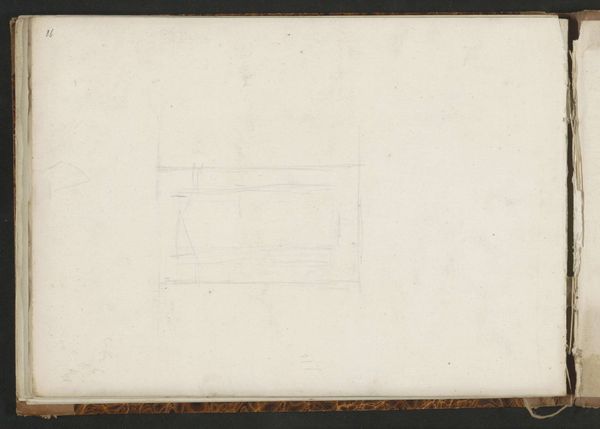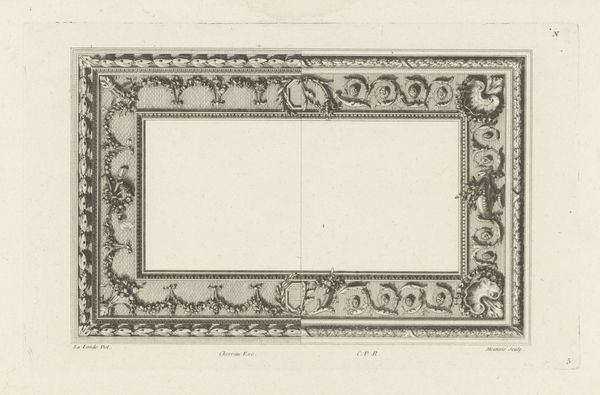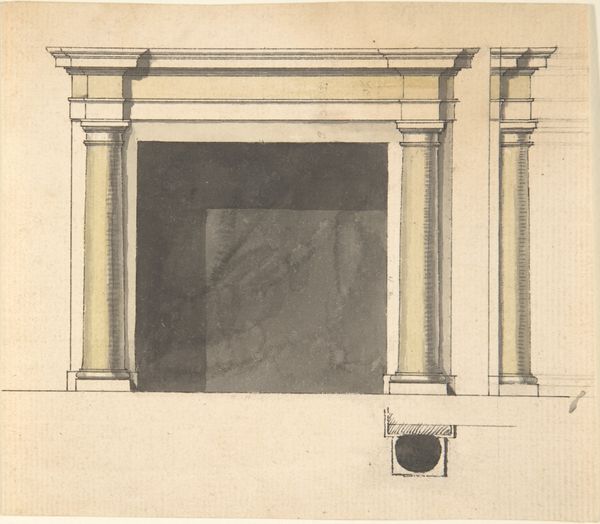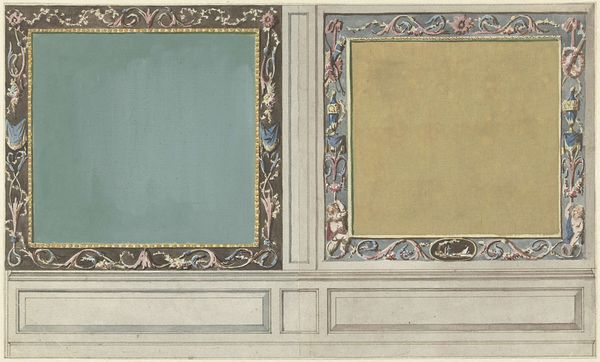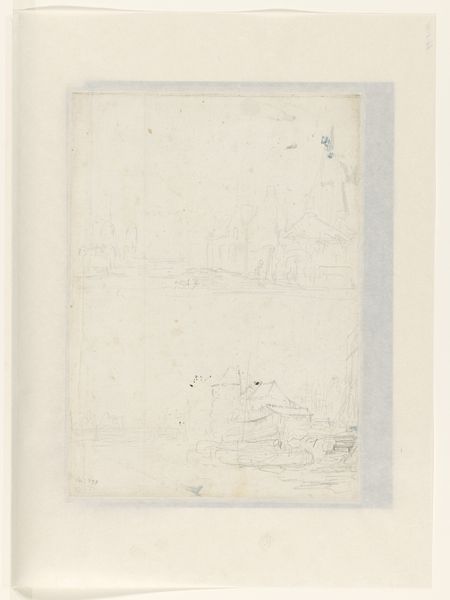
Design for a ceiling to be decorated with a trompe l'oeil balustrade 1830 - 1897
0:00
0:00
Dimensions: sheet: 10 11/16 x 14 13/16 in. (27.1 x 37.6 cm)
Copyright: Public Domain
Curator: Here we have Jules-Edmond-Charles Lachaise’s "Design for a ceiling to be decorated with a trompe l'oeil balustrade," dating from sometime between 1830 and 1897. The artist worked primarily with pencil on paper to create this geometric design. Editor: At first glance, there’s an incredible stillness. It’s a drawing of a design, but it reads more like an empty stage, expectant somehow, despite the lack of figures. It really emphasizes that sense of the 'void' that neoclassicism sometimes embraces. Curator: The illusionistic aspect of the design is critical. Lachaise is playing with the idea of the false or "deceiving the eye" and therefore how the eye interacts with architecture. Notice the incredible detail achieved with only pencil; the meticulous execution elevates the work far beyond a simple preparatory sketch. We see the labour of production as part of the appreciation of the piece itself. Editor: Absolutely, and think about the psychological implications! Trompe-l'oeil is designed to trick us into seeing something that isn't there. Here the symbolic 'promise' of the open sky above would alter the inhabitant’s experience within the constructed interior—giving an imagined sense of freedom and spaciousness that is, of course, an artifice. What does that reveal about the culture, to require such deceptions to create beauty? Curator: It's interesting you bring that up. Perhaps it wasn't about deception. Consider that at the time there would be tradesman employed for decoration work for large houses with high ceilings. This drawing shows how their skills, knowledge, and labor came together to fulfill an aesthetic commission. Editor: Still, all that precise craft aimed at a desired psychological impact! To control not just what's seen but how it's perceived through constructed visual cues. These neoclassicist motifs, derived from a reimagining of classical architecture, are meant to convey ideas of order, reason, and a particular social hierarchy. This kind of idealized architecture acted as constant visual messaging of social control. Curator: I agree, it does hint at that. But perhaps Lachaise wanted to demonstrate that the ceiling painter’s skill could also bring joy and artistic innovation to a space, rather than solely to dominate it. Editor: Maybe! Well, seeing this has certainly added some new textures to my understanding. The symbolic power of something as simple as ceiling decorations… food for thought. Curator: It reminds us how closely intertwined aesthetic concepts are with actual, physical craft. That dialogue always bears further contemplation.
Comments
No comments
Be the first to comment and join the conversation on the ultimate creative platform.
